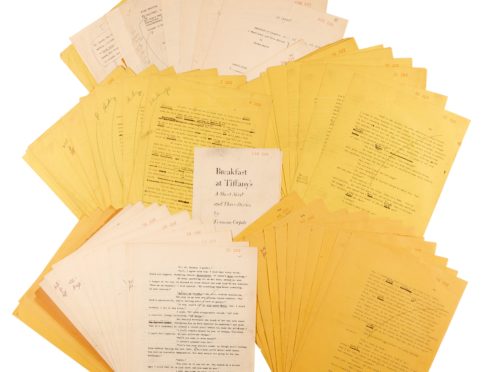Truman Capote’s final manuscript for Breakfast At Tiffany’s has sold for £377,000 at auction.
The typescript, covered in hundreds of Capote’s handwritten edits, sold to an anonymous buyer at Sotheby’s London for more than double the pre-sale estimate of £120,000-£180,000.
It reveals Capote gave his famous heroine Holly Golightly, played in the film adaptation by Audrey Hepburn, a different name – Connie Gustafson.

Until the very final draft, Holly was known by another name and at the final stage every reference to Connie is crossed out and replaced with Holly.
Dr Gabriel Heaton, specialist in books and manuscripts at Sotheby’s, said: “The character of Holly Golightly is of course the heart of Breakfast At Tiffany’s, and the most striking change made by Capote in this draft relates to her.
“Whilst Connie Gustafson may be more plausible as a child bride from Tulip, Texas, she would never have had the impact on the world that she has had as Holly Golightly.
“Undoubtedly one of the great names of modern comedy, it is as magnificently implausible as its owner and connects to her character in a number of ways: ‘Golightly’ reflects the lightness with which she treats the world, her lack of attachment to place, and perhaps hints at promiscuity, whilst ‘Holly’ will prickle if you get too close.”
This final working typescript provides detailed insight into Capote’s writing method and many of the revisions changing small details, substituting the word “mad” for “vexed” and “touch” to stroke”.

Capote later said Breakfast At Tiffany’s marked a turning point in his style and it is thought the revision were most likely made from his bed, which was his favourite place to write.
The typescript was submitted to Random House, which published all of Capote’s major works, in May 1958, just before Capote departed for a trip to Greece, and was sold with the original envelope from the publishers addressed to Mr Truman Capote, 70 Willow Street, Brooklyn 1, New York.
Much of the rest of Capote’s archive is divided between the New York Public Library and the Library of Congress, which has another draft of Breakfast At Tiffany’s.
